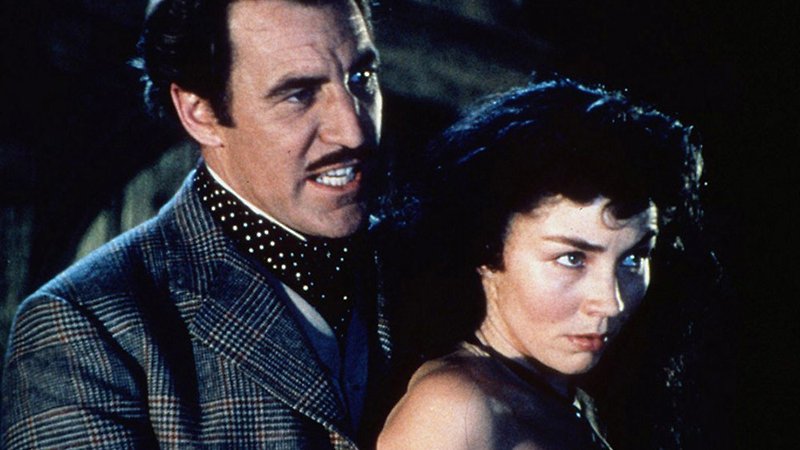
Screened as part of NZIFF 2002
Gone to Earth 1950
"Mary Webb’s 1917 novel was the archetypal bodice-ripper – wicked squires, pious yokels, adultery and redemption – out of which Powell and Pressburger made a visually spellbinding romance. Christopher Challis’ photography evokes Shropshire and the Welsh borders so that you can smell the earth... Cruelty besides beauty sweeps these pastoral vistas… the haunting, dreamlike consistency recalls that other fairy story of innocence and menace, The Night of the Hunter." — Martin Hoyle, Time Out
‘What do they know of England, who only the West End know?’ wrote Powell in defence of Gone to Earth in Picturegoer in 1950, claiming that he at least was on home ground in Shropshire, where both his parents’ families originated. Yet authenticity was, and perhaps still is, one of the bones of contention in this crimson melodrama. The imagery is bold and elemental: Hazel Woodus (magnificently portrayed by Jennifer Jones) is identified with the pet fox, which she hides from the huntsmen, and the rabbit she rescues from a trap. ‘The world’s a big spring trap and us in it’ – a metaphor that predicts her own predicament, caught between the lusty attentions of the squire Jack Reddin and the timid admiration of Edward, the minister. Between these two conventional, yet sharply etched, symbolic figures of profane and sacred love, Hazel is harried to her doom, as she ‘returns to earth’ down a mineshaft, trying to save Foxy – and thereby herself.
Schematic in its basic conception (thanks to Mary Webb), and with a colour palette and symbolic style boldly carried over from the theatre world of The Red Shoes to the Shropshire countryside, Gone to Earth constantly threatens to topple into cliché or caricature. What prevents this is the extraordinary energy and conviction of Jennifer Jones’ performance… by turns fiery and foxy. Even if the film ultimately lacks the psychological intensity of Black Narcissus or The Small Back Room and avoids the aesthetic complexity of The Red Shoes, it still contains a powerful statement of another Archers’ theme, the struggle between nature and culture, in the attempted domestication of Hazel’s elemental pantheism. The cruel melodrama of her life is captured in a fairground Punch and Judy show, while the landscape through which she wanders, like a lost Hardy heroine, is charged with a threatening symbolism – crystalised in images like the Dragon Tree and the harpist (her father) silhouetted on a hill – that remain unequalled in Britain’s predominantly urban, studio-bound cinema. — Ian Christie, Arrows of Desire, The Films of Michael Powell and Emeric Pressburger